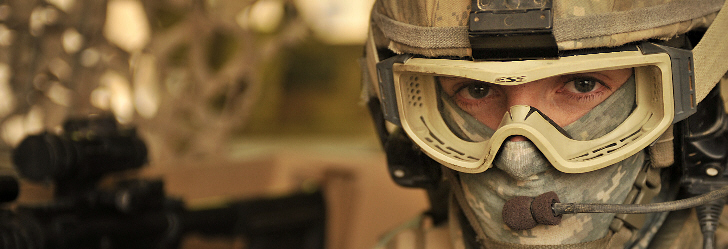Public Access To Aeronautical Data Will Be Blocked
Extensive databases of aeronautical information that have long been publicly available will be withdrawn from public access next year, a U.S. intelligence agency said yesterday.
"The National Geospatial-Intelligence Agency (NGA) will go forward with its previously announced proposal to remove its Flight Information Publications (FLIP) and Digital Aeronautical Flight Information File (DAFIF) from public access," according to an NGA news release issued on November 29.
NGA said that copyright concerns raised by foreign data sources were the driving factor for the decision to withhold the information from the public.
Proponents of public access argued that the move was unnecessarily restrictive in its scope.
It sets "a very bad precedent" when "the introduction of any copyright-protected material renders a massive public-domain database off-limits to the public," said one subject matter expert who requested anonymity because he works with NGA. "Many, many other databases are at stake."
"The decision that NGA should have taken, in my view, was to have offered a redacted version of the databases for public sale. DAFIF -- a really big database -- could easily have been stripped of its Australian-supplied [copyrighted] data and kept public and available," he told Secrecy News.
The data withdrawal will be begin in January 2006 and will be completed in October 2007.
The NGA did not approve another proposal to withdraw certain paper maps from public access.
"NGA has decided not to withdraw paper map products to a scale of 1:250,000 to 1:5,000,000. These products will continue to be available to the public," the news release stated.
The industry expert welcomed that decision. But he said that "the unstated reality is that NGA has mostly turned off the oxygen to cartographic production, so few new maps are being prepared as digital masters and even fewer are being sent to the printing press."
The NGA proposal to withdraw public access to aeronautical data, which was originally announced in November 2004, drew "numerous comments ... from private citizens and special interests groups."
"The National Geospatial-Intelligence Agency (NGA) will go forward with its previously announced proposal to remove its Flight Information Publications (FLIP) and Digital Aeronautical Flight Information File (DAFIF) from public access," according to an NGA news release issued on November 29.
NGA said that copyright concerns raised by foreign data sources were the driving factor for the decision to withhold the information from the public.
Proponents of public access argued that the move was unnecessarily restrictive in its scope.
It sets "a very bad precedent" when "the introduction of any copyright-protected material renders a massive public-domain database off-limits to the public," said one subject matter expert who requested anonymity because he works with NGA. "Many, many other databases are at stake."
"The decision that NGA should have taken, in my view, was to have offered a redacted version of the databases for public sale. DAFIF -- a really big database -- could easily have been stripped of its Australian-supplied [copyrighted] data and kept public and available," he told Secrecy News.
The data withdrawal will be begin in January 2006 and will be completed in October 2007.
The NGA did not approve another proposal to withdraw certain paper maps from public access.
"NGA has decided not to withdraw paper map products to a scale of 1:250,000 to 1:5,000,000. These products will continue to be available to the public," the news release stated.
The industry expert welcomed that decision. But he said that "the unstated reality is that NGA has mostly turned off the oxygen to cartographic production, so few new maps are being prepared as digital masters and even fewer are being sent to the printing press."
The NGA proposal to withdraw public access to aeronautical data, which was originally announced in November 2004, drew "numerous comments ... from private citizens and special interests groups."
sfux - 2. Dez, 10:31 Article 1487x read
















































